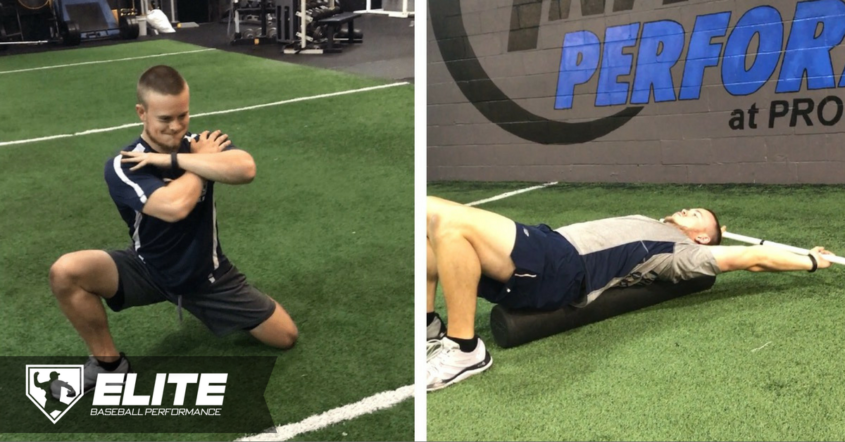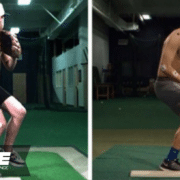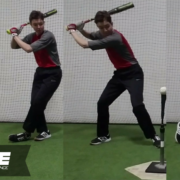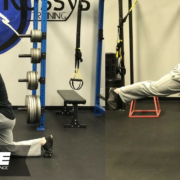Total Motion Release: A New Warm-Up Approach
There is no surprise that baseball is a very one-sided sport. Due to this one-sidedness, baseball athletes present an adaptive muscular tightness and weakness in their throwing shoulder from repetition after repetition.
There is also no surprise that one of the most common techniques to improve joint range of motion and structural alignment is through static stretching. Contrary to popular belief, it may not affect throwing velocity.
Static stretching may be a good tool to pull from the tool box, but it may not have the greatest carry over since throwing a baseball is a dynamic activity.
However, what might surprise you is that there is a new method being used called Total Motion Release (TMR).
The TMR system assesses the body as a unified symphony of joints, like the Functional Movement Screen (FMS), to determine pain or dysfunction in one area that is affected by movements that take place elsewhere in the body.
The TMR system has six different movements to assess dysfunction and asymmetry. In this present study, the researchers only used the Standing Trunk Twist and Standing Arm Raise.
The TMR system was compared to a general dynamic warm up to determine which method was superior in increasing total range of motion in the throwing shoulder.
All 20 subjects performed both the TMR and dynamic warm up. However, in the cross-over design of the study, one group performed the TMR following the dynamic warm up and vice versa.
The results of the study showed that the TMR system significantly improved total range of motion in the throwing shoulder when compared to the general dynamic warm up.
The results also showed that there was also a time effect. Those who performed the TMR following the dynamic warm up significantly improved total joint range of motion when compared to the group who performed the TMR first.
A general dynamic warm up is important for increasing blood flow, tissue extensibility, and neuromuscular communication. To get the biggest bang for your buck, perform your dynamic warm up first, and then follow it up with using controlled movements from the TMR system.
Future research is needed to determine the retention rate of the range of motion improvements following the TMR system.
For example, between innings, 6-hours post pitching, 12-hours post pitching, 24-hours post pitching, as well as its effects on athletic performance such as throwing velocity, total innings pitched, etc.
Comparing the immediate effects of a total motion release warm-up and dynamic warm-up protocol on the dominant shoulder in baseball athletes.
A decrease in total range of motion (ROM) of the dominant shoulder may predispose baseball athletes to increased shoulder injury risk; the most effective technique for improving ROM is unknown. The purpose of this study was to compare the immediate effects of Total Motion Release® (TMR®) to a generic dynamic warm-up program in baseball athletes. Baseball athletes (n=20) were randomly assigned to an intervention group: TMR® group (TMRG; n=10) or traditional warm-up group (TWG; n=10). Shoulder ROM measurements were recorded for internal (IR) and external (ER) rotation, the intervention was applied, and post- measurements were recorded. Each group then received the other intervention and post- measurements were again recorded. The time main effect (p ≤ .001) and the time x group interaction effect were significant (p ≤ .001) for IR and ER. Post hoc analysis revealed TMR® produced significant increases in mean IR (p ≤ .005, d = 1.52) and ER (p ≤ .018, d = 1.22) of the dominant shoulder initially. When groups crossed-over, the TMRG experienced a decrease in mean IR and ER following the dynamic warm-up, while the TWG experienced a significant increase in mean IR (p ≤ .001, d = 3.08) and ER (p ≤ .001, d = 2.56) following TMR® intervention. TMR® increased IR and ER of the dominant shoulder more than a dynamic warm-up. Dynamic warm-up following TMR® also resulted in decreased IR and ER; however, TMR® following dynamic warm-up significantly improved IR and ER. Based on these results, TMR® is more effective than a generic dynamic warm-up for improving dominant shoulder ROM in baseball players.
Jarad Vollkommer
Latest posts by Jarad Vollkommer (see all)
- Strength-Speed: Customized Mechanics for Baseball Pitchers - August 20, 2019
- Determining Individual Stability Needs for the Baseball Player - June 25, 2019
- In-Season Training Metrics for the Baseball Player - March 5, 2019











Leave a Reply
Want to join the discussion?Feel free to contribute!